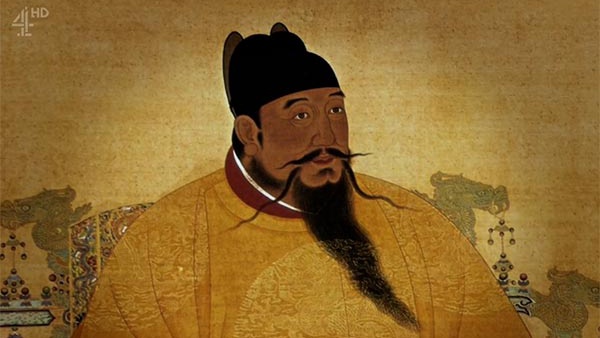
Secrets of China's Forbidden City is a co-production between China Intercontinental Communication Center and BBC. It taps in to series questions from visits to its workshops and research labs, with particular focus on two aspects: transportation of materials and how it withstood natural disasters.
The Forbidden City, the biggest wooden structure on Earth and a place of staggering wealth and power, was built under the order of Emperor Yongle of the Ming Dynasty (1368-1644).
The city is spread over 178 acres, 10 time that of France's Palace of Versailles. The city originally housed 900 buildings with 9,999 rooms, just one less than the divine number of 10,000, which was reserved for heaven.
Shipping
Nanmu, the rarest of all Chinese woods, was widely used in the construction of the palace for its density and beauty. It is reported that some 10,000 nanmu logs were shipped from forests more than 18,000 km southwest of Beijing. Furthermore, golden floor tiles from 1,000 km south and 18 million bricks, each weighing 24 kg, also had to be transported to the capital, a task that seems unachievable in an unindustrialized world.
Ancient Chinese people had the wisdom to overcome that, through building the Grand Canal.
"The Grand Canal, which is both older and longer than the Panama Canal and the Suez Canal, solved a large problem of canal engineering at the time," said Jim Griffiths, a hydrologist.
The Grand Canal started from the commercial hub of Hangzhou to the south, passed tributaries of Yangtze and Yellow rivers and reached far north to Beijing. The nanmu logs were floated to Beijing along with a fleet of 20,000 barges with 200 million liters of grain to feed the one million workers each year.
But some materials were unsuitable to be shipped.
Emperor Yongle's grand staircase, a 16-meter-long hand-carved masterpiece that symbolizes his power, weighs more than 300 tons, equivalent to 125 Land Rovers.
The marble used in the staircase had to be transported from a quarry 60 km away, and obviously, no ship could withhold that much weight.
Modern science suggests that ancient Chinese people used ice.
Each winter, Beijing freezes. Scientists featured in the documentary speculate that workers put the large marble onto the frozen rivers and added a little bit of water as a lubricant to reduce friction. Calculations suggest that only 180 men were necessary to move a rock weighing more than 300 tons.
Earthquakes
Beijing sits in a very active seismic hub.
In its 600 years, the Forbidden City has withstood over 200 devastating quakes, including the deadliest earthquake of the 20th century in Tangshan, which centered around 153 km east of the capital. The Tangshan earthquake in 1976, 7.8 in magnitude, obliterated the city and killed nearly one quarter of a million people in just 15 seconds.
In a stark contrast, the Forbidden City suffered minimal damages.
Experts believe the secrets lie in dougong, an architectural element commonly found in traditional East Asian architecture.
A dougong is a complex bracket that supports the huge roof. At first glance, it looks like an elaborate decorative feature. But the unique design is the structural key to every Forbidden City building.
In traditional Chinese architecture, there are no nails or glue, nothing holding it together other than blocks of craftily designed pieces of wood locking against one another, and sheer ingenuity.
A resident seismologist of the Forbidden City, surnamed Zhou, created a shake table calibrated to the size and weight of a 1:5 scale model of a typical building in the palace to replicate the energy of quakes in increasing magnitude and simulate how much quake forces the architectures can take.
Under a simulated earthquake of magnitude 5, walls around the model pavilion began to crumble but the pavilion stood upright in its complete form. At magnitude 9.5, an energy equivalent to 200 tons of the explosive TNT, the supported columns started to move but did not crack. At 10.1, the highest level tested, the pavilion still stood high.
The secret can be summarized in one word -- flexibility.
The dougong acts like a shock absorber in a car and there's both friction and rotation that absorbs the energy from the earthquake.
Something as simple as a craftily cut piece of wood, that was designed more than 2,000 years ago, reached their zenith in the Forbidden City and protected the impregnable fortress from natural disasters for centuries.
The vision of one man may have wanted to steer China into a whole new direction, but it was the genius of the Chinese people that made it possible.



